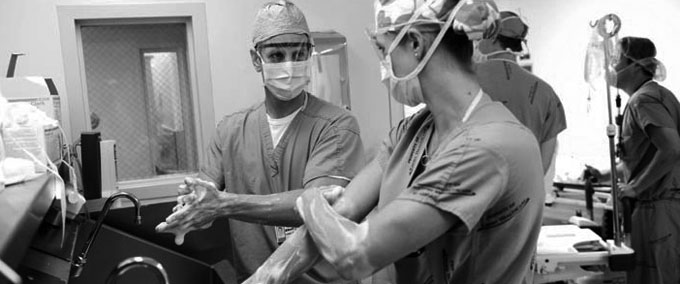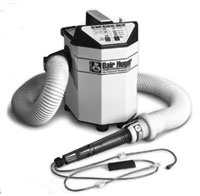
Surgery can be pretty intimidating and is very serious business. Most people heading into a surgery are worried about potential complications and a long, painful recovery. Although complications are rare, they can happen. For example, sometimes there can be excessive bleeding during surgery, delayed healing after the surgery, and patients can get infections during surgery. There are certain factors that can exacerbate or lead to these complications. But thankfully, modern science has helped to create a device that helps reduce the risk of complications during surgery. The Bair Hugger is a forced-air warming system owned by 3M to prevent and treat hypothermia and to help prevent other complications in patients during surgery. The Bair Hugger has become an integral addition to thousands of operating rooms in hospitals all over the United States.
No matter how safe or commonplace a surgery might be an individual undergoing any surgical procedure is bound to face complications. There is a reason why patients must sign release forms previous to a surgery. In the late 80’s, a certain device was introduced in surgical rooms that helped to greatly reduce the potential side effects and complications from surgery. The Bair Hugger system includes blankets, warming units and accessories and has been used on more than 180 million patients in more than 80 percent of the hospitals in the United States. The inventor of the Bair Hugger was focused on trying to solve the common issue of hypothermia during surgery. The body while under anesthesia has a difficult time maintaining its temperature. Almost all patients become hypothermic during surgery. When a person becomes hypothermic, their body expels heat faster than it can produce it.
Hypothermia is very common during the first hour of surgery and the longer the patient’s body remains hypothermic, the more likely they would be that they would have to receive a transfusion. Dr. Daniel Sessler, of the Department of Outcomes Research at the Cleveland Clinic in Ohio, told Reuters Health that, “Most patients become hypothermic during the first hour of anesthesia and then temperature slowly returns toward normal, so that by the end of the surgery most patients are normothermic,” Dr. Sessler told Reuters Health in a telephone interview. “But the amount of hypothermia that we saw and the number of hypothermic patients was fairly high, and the amount of hypothermia was significantly associated with the need for blood transfusion.”

The Bair Hugger warming unit is a very straightforward system. It consists of a warming unit and a disposable blanket. The disposable blanket is connected to the warming unit via a tube. The blanket is placed on top of the patient and warm air is gently forced into the blanket and then it circulates through the blanket. The blankets are designed to use the pressure points on the body to prevent heat from reaching areas that are at risk for pressure sores or burns. The blankets also include drainage holes where the fluid can drain from the surface of the blanket to a piece of linen underneath. The drainage system is to help reduce the risk of skin softening and also reduce the risk of heat loss from evaporation. The blankets are disposable in order to help prevent the chance of infection transmission from patient to patient.
Currently 3M is the owner of the Bair Hugger. A company named Arizant originally owned the Bair Hugger until Arizant was bought by 3M. The company that is best known for the post-it note, also has products for sale in a variety of fields including healthcare. They also offer a variety of infection prevention products that include casts and splints, fluid warmers, hygiene monitors, drapes, masks and respirators, sterilization monitors and temperature monitors.
The popularity of the Bair Hugger is undeniable. Doctors and hospitals all over the United States use the Bair Hugger every day to help prevent hypothermia. However, there is an outspoken critic to the Bair Hugger and it happens to be the individual who invented it. The doctor that invented the Bair Hugger has publically stated that he believes that the Bair Hugger can cause surgical site infections. However, numerous studies were conducted that have proved those claims to be incorrect. Both internal and external studies were conducted and over 60 clinical trials proved that the Bair Hugger is safe and effective. Dr. Javad Parvizi, Professor of Orthopedic Surgery, Rothman Institute at Thomas Jefferson University, analyzed the evidence presented that FAW increased infections. He said, “There is no scientific proof that the use of forced-air warming blankets lead to an increase in surgical site infection regardless of the type of surgical procedure and the type of operating room.”
The Bair Hugger system is the preferred patient warming device in 8 out of the top 10 orthopedic hospitals in the United States. Regardless of 3M backing the product, hospitals have been using the system for decades now and have the scientific backing to prove that it is the best system on the market. Numerous studies have been conducted and numerous clinical trials have taken place that help bolster the claims that the Bair Hugger is the best product on the market.
Resources:
http://www.fawfacts.com/
https://solutions.3m.com/wps/portal/3M/en_GB/patient-warming/-/





